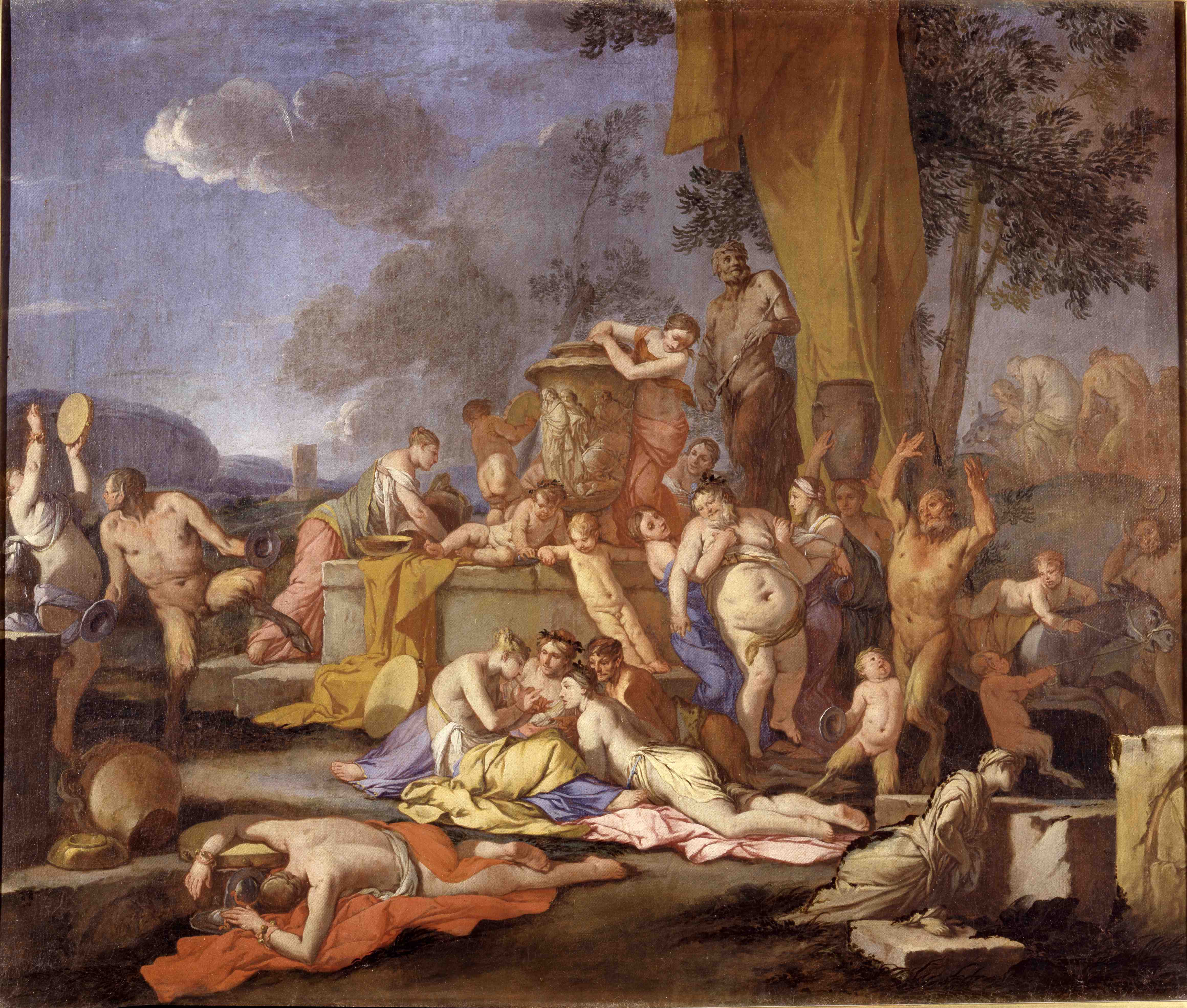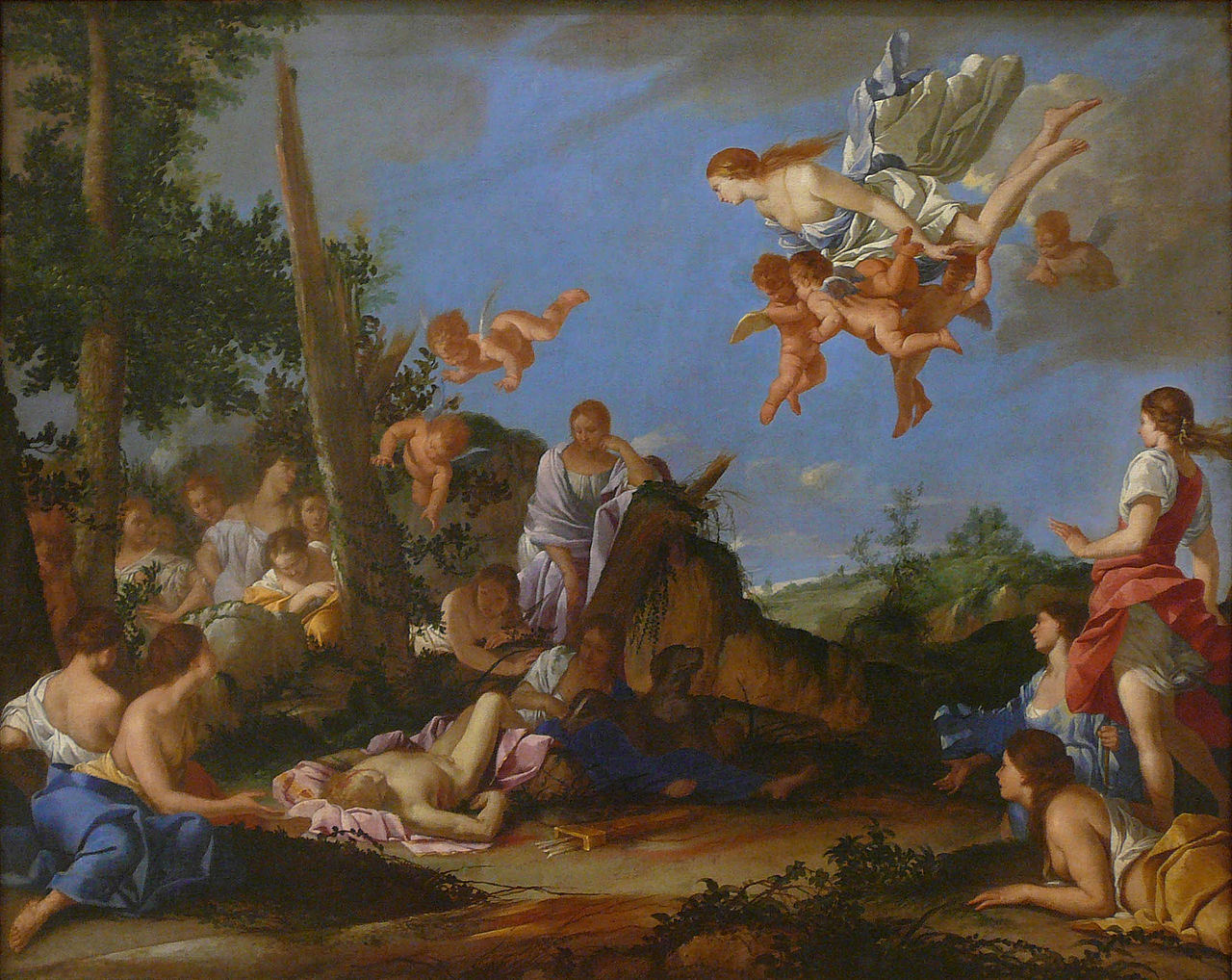Giulio Carpioni
Giulio Carpioni (* 1613 in Venice, † January 29, 1678 in Vicenza ) was an Italian painter and etcher of the early Baroque Venetian.
Life
Giulio Carpioni was a pupil of the Venetian painter Alessandro Varotari. He was early attention to the works of Titian by him, but also the works of Jean Leclerc and Carlo Saraceni influenced his artistic development.
To 1631 he and Varotari traveled to Bergamo, where they studied the Lombard art. On the way back to Venice Carpioni met the painter Pietro della Vecchia know. Other influences on his own work were the etchings of ODOARDO Fialetti, Simone Cantarini and Pietro Testa, as well. Latter indirectly by the Bacchus motives of Nicolas Poussin, who took up Testa in his works
1638 could be Carpioni down in Vicenza. His earliest dated works are two lunettes, Glorification of the Podesta Vincenzo Dolfin ( 1647) and glorification of the Podestà Bragadin Girolamo (1648 ), whose style is very reminiscent of the painter Francesco Maffei and today are both located in the municipal museum of Vicenza.
This was followed by The Martyrdom of Saint Catherine (1648; Vicenza, Church of Santa Caterina ), a self-portrait ( Pinacoteca di Brera ) and mythological frescoes ( 1650, Villa Caldogno Nordera ). At that time dominated Maffeis Baroque style of painting, the art scene in Vicenza and this influence was also reflected strongly in Carpionis the manufacturing plants resist, such as the Adoration of the Magi ( 1650; Vicenza, Museum Civico ). Its a few years later dated image of St. Nicholas ' expulsion of demons (about 1656; Vicenza, Chapel Santa Nicola), however, shows a departure from the exuberance of the Baroque through to naturalness of a Caravaggio.
After Maffei had 1657 left the city to move to Padua, began Carpionis most creative phase of life. So, in the chapel of Santa Chiara in Vicenza several works by him (eg The Five Saints, 1663 ). He has also created another impressive frescoes that are now in museums and buildings of the city. His most important later works originates from 1671 and is located on the ceiling of the chapel of St. Nicholas in Vicenza. There are eleven pictures representing the Triumph of St. Nicholas and the virtues. Of particular originality are its small size, charming Bacchanalia, which reflect the influence of Testa and Titian. More from Carpioni favorite subjects were the victory of Silenus and the Kingdom of Hypnos, which inspired him to create different pictures.
In addition to oil painting, he also made numerous etchings, with predominantly religious and mythological motifs. They can be seen today, for example, in the Uffizi or the Ashmolean Museum.






.jpg/220px-Villa_Caldogno_2007-(7610).jpg)


